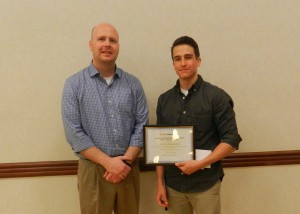
Water resources research institutes are required to leverage each dollar of federal support with two dollars of non-federal support. As a result, the WRRI program is one of the most cost-effective, cost-shared national research programs in the country.
MORGANTOWN, W.Va. - Outreach, communication, storytelling. These are important functions for any organization trying to get their message out. If the organization doesn’t do a good job telling their story people will fill that information gap with rumors, gossip or, perhaps even worse, they won’t know you exist. This is especially true when communicating the importance and impact of a program to members of Congress.
Each year, directors from the 54 water resources research institutes meet in Washington, D.C. at the National Institutes for Water Resources (NIWR) Annual Meeting. The institutes represent each state, as well as the District of Columbia, Guam, Puerto Rico, the Virgin Islands, the Federated States of Micronesia, the Commonwealth of the Northern Mariana Islands and American Samoa.
This year’s meeting was held in February and served as an important opportunity for the NIWR directors to meet with legislators and show the impact that the Water Resources Research Institute (WRRI) program has across the country.
“With the intense competition for the federal funding that does exist in congress, it’s important that people understand what the [WRRI] program does and what it offers,” said Dr. Richard Cruse, NIWR president and director of the Iowa Water Center. “In the absence of sharing our story, it’s easy for someone to lose site of the importance of this program.”
Water resources research institutes are required to leverage each dollar of federal support with two dollars of non-federal support. As a result, the WRRI program is one of the most cost-effective, cost-shared national research programs in the country.
The WRRI program differs from other water research programs in that the NIWR network represents the only authorized federal-state program that focuses on applied water resource research, education, training, and outreach.
“A critical nature of this program is that there is a grass roots, or bottom up, decision on what is going to be funded,” said Cruse. “Most of the other programs are decided in Washington, D.C. and the program panels decide what the research is going to be about. The WRRI program is decided at the state level.”
This is important because the staff at the institutes and the advisory panels that guide them are made up of people who live in the state and make decisions informed by research outcomes. They know firsthand the most important issues facing water users in their state.
Dr. Paul Ziemkiewicz, director of the West Virginia Water Research Institute, pointed out that water research priorities, at the state level, change according to industry and market changes, regulatory initiatives and crises.
“These priority changes can happen quickly and the WRRI program allows a rapid response to state legislatures, agencies, industry and the public,” said Ziemkiewicz. “This is a need that simply cannot be filled through programs that focus on national priorities.”
Water problems, however, are not bound by state borders but by the watersheds in which they reside. That’s why collaboration among institutes is one of the most distinctive aspects of the WRRI program; states working together to solve local, regional and national water issues. According to Ziemkiewicz, just as each institute provides a state level focus for water research, collaborations among institutes within a region helps draw research talent toward trans-boundary water issues and develop solutions for federal and state policy makers.
-WVWRI-
as/3/28/16



